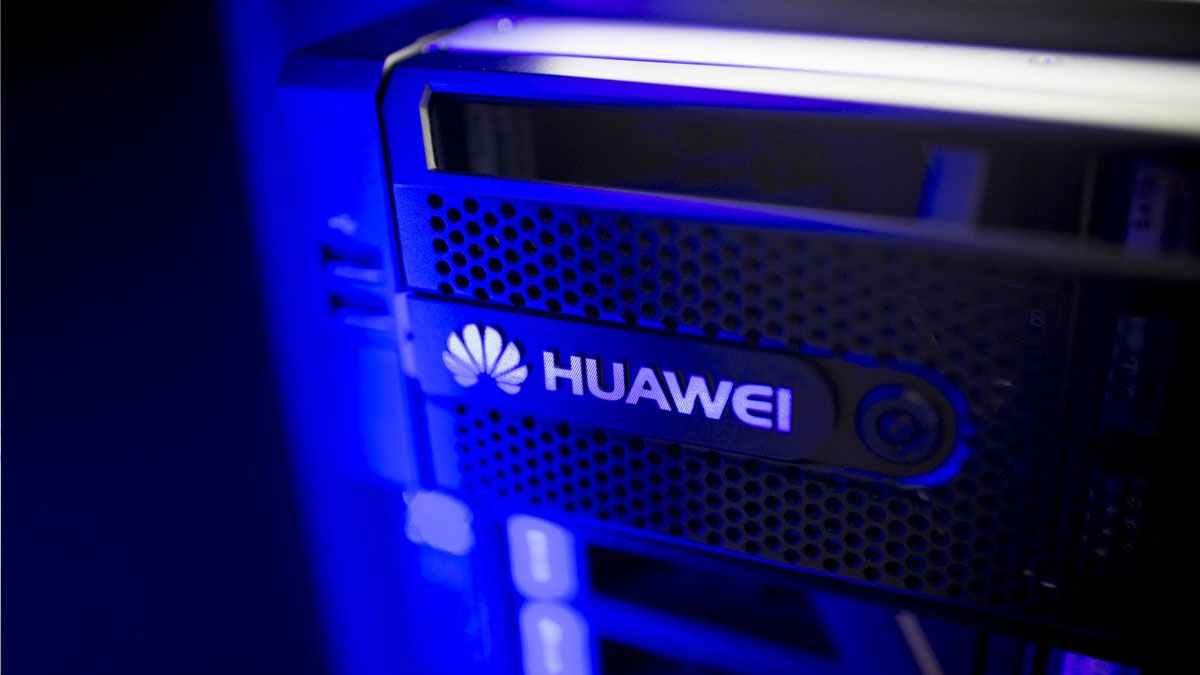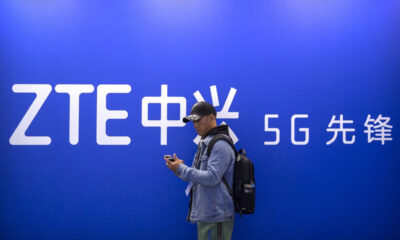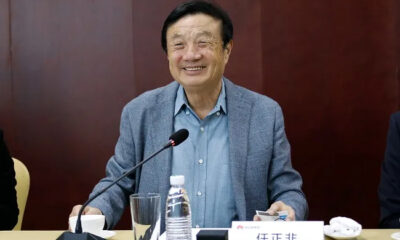Tech
Chinese Spies Accused of Using Huawei in Secret Australia Telecom Hack
Published
3 years agoon

The U.S. government has warned for years that products from China’s Huawei Technologies Co., the world’s biggest maker of telecommunications equipment, pose a national security risk for any countries that use them. As Washington has waged a global campaign to block the company from supplying state-of-the-art 5G wireless networks, Huawei and its supporters have dismissed the claims as lacking evidence.
Now a Bloomberg News investigation has found a key piece of evidence underpinning the U.S. efforts — a previously unreported breach that occurred halfway around the world nearly a decade ago.
In 2012, Australian intelligence officials informed their U.S. counterparts that they had detected a sophisticated intrusion into the country’s telecommunications systems. It began, they said, with a software update from Huawei that was loaded with malicious code.
The breach and subsequent intelligence sharing was confirmed by nearly two dozen former national security officials who received briefings about the matter from Australian and U.S. agencies from 2012 to 2019. The incident substantiated suspicions in both countries that China used Huawei equipment as a conduit for espionage, and it has remained a core part of a case they’ve built against the Chinese company, even as the breach’s existence has never been made public, the former officials said.https://imasdk.googleapis.com/js/core/bridge3.493.0_en.html#goog_1149147929Chinese Spies Accused of Using Huawei in Secret Telecom HackWATCH: Chinese Spies Accused of Using Huawei in Secret Telecom Hack
The episode helps clarify previously opaque security concerns driving a battle over who will build 5G networks, which promise to bring faster internet connectivity to billions of people around the globe. Shenzhen-based Huawei dominates the more than $90 billion global telecommunications equipment market, where it competes against Sweden’s Ericsson AB and Finland’s Nokia Oyj. But the U.S., Australia, Sweden and the U.K. have all banned Huawei from their 5G networks, and about 60 countries signed on to a U.S. Department of State program where they’ve committed to avoiding Chinese equipment for their telecommunications systems. Such efforts, which have also included U.S. sanctions against the Chinese company, have slowed Huawei’s growth and heightened tensions with China.Sponsored ContentThe Chinese Energy Company Taking the Lead on DecarbonizationENN Energy
The briefings described to Bloomberg contained varying degrees of detail, and the former officials who received them had different levels of knowledge of — and willingness to discuss — specifics. Seven of them agreed to provide detailed accounts of the evidence uncovered by Australian authorities and included in their briefings.
At the core of the case, those officials said, was a software update from Huawei that was installed on the network of a major Australian telecommunications company. The update appeared legitimate, but it contained malicious code that worked much like a digital wiretap, reprogramming the infected equipment to record all the communications passing through it before sending the data to China, they said. After a few days, that code deleted itself, the result of a clever self-destruct mechanism embedded in the update, they said. Ultimately, Australia’s intelligence agencies determined that China’s spy services were behind the breach, having infiltrated the ranks of Huawei technicians who helped maintain the equipment and pushed the update to the telecom’s systems.
Guided by Australia’s tip, American intelligence agencies that year confirmed a similar attack from China using Huawei equipment located in the U.S., six of the former officials said, declining to provide further detail.
Mike Rogers, a former Republican congressman from Michigan who was chair of the U.S. House of Representatives intelligence committee from 2011 to 2015, declined to discuss the incidents. But he confirmed that national bans against Huawei have been driven in part by evidence, presented in private to world leaders, that China has manipulated the company’s products through tampered software updates, also known as patches.
“All their intelligence services have pored over the same material,” said Rogers, a former FBI agent who is now a national security commentator on CNN. “This whole body of work has come to the same conclusion: It’s all about administrative access, and the administrative patches that come out of Beijing are not to be trusted.”
Many people familiar with Australia’s intelligence told Bloomberg that they were bound by confidentiality agreements and couldn’t discuss it on the record. But Michèle Flournoy, former under secretary of defense for policy at the Department of Defense under President Barack Obama, said she wasn’t constrained from doing so.
Flournoy, who is co-founder and managing partner of WestExec Advisors LLC, a national security consulting firm closely aligned with the Obama and Biden administrations, confirmed the intrusion and the tampered software update from Huawei. She said she learned about the episode after leaving government in early 2012, emphasizing that the information was shared in unclassified forums.
“The Australians from the get-go have been courageous in sharing the information they had, not only with the intelligence channels but more broadly in government channels,” Flournoy said. “Australia experienced it, but it was also a vicarious wake-up call for Australia’s allies.”
The Australian Signals Directorate, that country’s leading cybersecurity agency, declined to answer specific questions about the incident. “Whenever ASD discovers a cyber incident affecting an entity, it engages the relevant entity to provide advice and assistance,” the agency said in a statement. “ASD’s assistance is confidential — it is a matter for relevant entities to comment publicly on any cybersecurity incident.”
You may like
-


Huawei OceanStor Pacific Ranks highest in Gartner Critical Capabilities Report
-


Semiconductor association flags Huawei home chip push
-


ZTE hits back at European Commission claims
-


Huawei founder outlines local component push
-


U.S. charges two Chinese nationals with obstructing Huawei case, source says
-


Huawei partners with GOLDEN HARVEST to build a cloud-based, fully connected smart Bangladesh
Tech
A10 Networks Expands its Cybersecurity Portfolio with Acquisition of ThreatX Protect
Published
3 months agoon
March 13, 2025
ThreatX Protect Addresses Critical Need to Protect Against Evolving Application and API Security Threats
To continue to help customers address the rapidly evolving cyber threat landscape, A10 Networks has acquired the assets and key personnel of ThreatX Protect expanding its cybersecurity portfolio with web application and API protection (WAAP). The acquisition is expected to be modestly accretive to A10’s earnings per share in 2025 and has closed.
Attacks against web applications and application programming interfaces (APIs) are on the rise and are a significant threat to enterprises. ThreatX Protect provides a unique WAAP solution using behavioral and risk profiling to help protect enterprises from evolving threats, including threats to AI applications, which can complement an AI firewall. Delivered as a software-as-a service solution, ThreatX Protect includes API protection, bot management and next-generation web application firewall.
“Expanding the A10 Defend security portfolio with ThreatX Protect gives our customers an additional tool in their strategy to protect against new and evolving threats,” said Dhrupad Trivedi, president and CEO, A10 Networks. “Our strategic focus is on helping enterprises secure their applications and networks from the growing number of threats today, as well as protecting the emerging AI use cases of the future. Adding WAAP to our solution set gives customers additional capabilities to help establish a strong security posture.”
“We are thrilled that A10 Networks has acquired certain assets of ThreatX, including the brand and the TX Protect WAAP solution to expand A10’s security portfolio,” said Gene Fay, CEO of ThreatX. “A10 has been a fantastic partner throughout this process, and we are confident that our customers and employees will thrive under their leadership.”
As a result of this transition, the remaining assets of ThreatX will be launched as Run Security with TX Prevent, the cutting-edge eBPF-based solution re-launched as RS Prevent.
ThreatX Protect supports A10’s strategy of helping customers deploy A10 security solutions in a hybrid approach to protect apps and APIs running anywhere – public cloud, private cloud, co- location facilities or on-premises. The A10 Defend portfolio of solutions provides DDoS protection, DDoS threat intelligence and web application, and now adds a full-featured WAAP solution all integrated into a single platform with end-to-end delivery and stronger security for mission-critical applications.
Specific terms of the transaction were not disclosed. The acquisition is consistent with A10’s stated strategy of expanding the Company’s security portfolio to grow in the enterprise market. The acquisition does not represent a material change to the Company’s 2025 financial outlook or long-term business model.
Tech
Rampant Corruption Plagues ICT Sector in 15 years : White Paper
Published
6 months agoon
December 3, 2024
Highlights
- ICT sector plagued by corruption
- Hi-Tech parks fail to attract investors
- Lack of transparency in project implementation
- Misuse of funds to benefit preferred vendors
- Calls for robust project evaluations
The White Paper on the State of the Bangladesh Economy, submitted to the Chief Adviser today (1 December), identified the Information and Communication Technology (ICT) sector as one of the most affected by corruption.
“The review of the White Paper puts the banking sector on top of the most corruption-ravaged sectors, followed by physical infrastructure, and energy and power,” it reads.
ICT was also identified as one of the most corruption-affected sectors by its operational and technological novelty, it added.
The White Paper committee’s comment highlights years-long corruption allegations in the key sector the Awami League pledged to improve during the 2008 election for the sake of national progress.
And the story later frustrated the youth and technology experts due to huge waste of taxpayers’ money in improper projects. These lacked transparencies and were alleged to benefit people close to the then regime.
In the one and half decades of Sheikh Hasina’s ruling, the state spent nearly Tk29,000 crore to build “Digital Bangladesh” and later “Smart Bangladesh by 2041.”
Most of the funds were allocated to infrastructure projects, which still require justification from sector experts. For instance, Hi Tech parks outside major cities barely attracted investors.
Government-funded projects aimed at youth ICT training, women empowerment, and local app and game development, costing hundreds of crores of Taka, appear to have primarily benefited officials and their preferred vendors, reveals the gradually unfolding facts.
The interim government in August formed a committee to evaluate the ongoing projects already recommended to downsize them in lots of unjustified cases. It will also dig deeper to find the anomalies in the already finished projects.
In an example of how the government projects were being justified in questioned ways, the white paper mentioned a 2013-18 ICT Division project “Leveraging ICT for Growth, Employment, and Governance Projects” that had a 43% cost increase to Tk774 crore, from its original budget of Tk521.97 crore.
According to the White Paper, the large capacity-building initiative aimed to promote the IT sector and train 30,000 individuals for employment within it. The evaluation report from the Planning Ministry’s Implementation Monitoring and Evaluation Division showed strong satisfaction with the project’s success.
However, it overlooked the contributions of training institutions, colleges, and universities that also played a role in advancing the sector, the White Paper stated.
Additionally, the quality of the evaluation report was inadequate, as it failed to distinguish the marginal impacts of training 30,000 individuals on the entire IT sector.
This analytical weakness in assessing the project’s impacts has contributed to the continuation of various ICT and other projects that lack tangible benefits.
“It highlights the need for more robust evaluations to ensure that future initiatives are grounded in a clear understanding of their actual contributions to the sector,” said the White Paper.
Bangladesh lags behind many comparator countries in a number of technological indexes, despite the digital and smart nation narratives.
Tech
Corruption behind Tk 650bn investment in telecom, ICT sectors
Published
6 months agoon
December 3, 2024
ICT Advisor Nahid Islam has said due to ‘irregularities’, Bangladesh has not realised the full benefits of the ‘Digital Bangladesh’ initiative despite a substantial investment of Tk 650 billion in the telecommunications and ICT sectors under the Awami League government.
Speaking at an ADP review meeting at the Posts and Telecommunication Division on Monday, Nahid criticised the execution of numerous costly projects under the ‘Digital Bangladesh’ banner which, according to him, failed to deliver their promised impact.
From fiscal year 2010-11 to 2024-25, the ICT Division implemented projects worth Tk 250 billion, while the Posts and Telecommunications Division accounted for projects totaling Tk 400 billion.
Despite these investments, Bangladesh scored a modest 62 out of 100 in the June 2024 edition of the ICT Development Index by the United Nations International Telecommunication Union, trailing behind nations such as Myanmar, Sri Lanka, the Maldives, Vietnam, and Bhutan.
Highlighting the country’s technological lag, Nahid referenced the May 2024 Ookla Speedtest Global Index, where Bangladesh ranked 109th out of 147 countries in internet speed, below Kenya.
Also, Bangladesh placed 108th in broadband internet performance, with India, Sri Lanka, Bhutan, Rwanda, and Ghana all performing better.
In the realm of artificial intelligence, the IMF’s June 2024 Artificial Intelligence Preparedness Index placed Bangladesh 113th, again behind India, Sri Lanka, Bhutan, Rwanda, and Ghana.
The Digital Quality of Life Index 2023 by cybersecurity firm Surfshark saw Bangladesh drop five notches to 82nd among 121 countries, with internet speed 5 percent below the global average.
Rankings in the Key Government Index, e-security, and internet purchasing capacity were similarly below par.
Nahid also pointed out that Bangladesh lags in freelancing, ranked 29th among the top 30 global destinations, as per an April 2024 report by US-based CEOWORLD magazine, trailing behind India and Pakistan.
These indicators, according to Nahid, reflect not just the failure to enjoy the full benefits of digital initiatives but also suggest pervasive irregularities in the sector.
He criticised the frequent delays and the need for repeated extensions in project timelines, calling for more sensible proposals regarding extensions.
Nahid emphasised that timely and proper project completion could significantly propel the nation’s progress in internet and telecommunication sectors, benefitting all Bangladeshis.
The meeting disclosed that nine projects are currently underway within the four offices of the Posts and Telecommunications Division for the fiscal year 2024-25, involving entities such as Bangladesh Telecommunications Company Limited, or BTCL, Teletalk Bangladesh Limited, the Directorate of Posts, and Bangladesh Submarine Cables PLC.
As of August 2024, national-level project progress for the fiscal year was reported at 1.02 percent, with the Posts and Telecommunications Division achieving a progress rate of 3.84 percent.

A10 Networks Expands its Cybersecurity Portfolio with Acquisition of ThreatX Protect

Progressive Life Insurance successfully settles claims totaling nearly Tk 40 crore in 2024

Banks see rising deposits for higher interest rates










